History/ES 247 Reading Guide
Immigration and Industrialization: The French-Canadian Migration to Madawaska and the Mill Community in Lewiston
- Beatrice C. Craig, "Early French Migrations to Northern Maine, 1785-1850," Maine Historical Society Quarterly 25.4 (1986), 230-247. (e-reserve)
- Yves Frenette, "Understanding the French Canadians of Lewiston, 1860-1900: An Alternate Framework," Maine Historical Society Quarterly 25.4 (1986), 198-229. (e-reserve)
Further reading:
- Dorothy A. Blanchard, "Into the Heart of Maine: A Look at Dexter's Franco-American Community," Maine Historical Society Quarterly 33.1 (1993), 20-39.
- Katherine Hoving, "'You Speak Very Good English for a Swede': Language, Culture, and Persistence in Maine's Swedish Colony," Maine History 40.3 (Fall 2001), 219-244.
- Theodore L. Steinberg, "Dam-Breaking in the 19th-century Merrimack Valley: Water, Social Conflict, and the Waltham-Lowell Mills," Journal of Social History 24 (1990), 25-46. JSTOR
Questions:
- The story of French Canadians and Acadians in Maine is without question a cultural story. But it is also an economic and environmental story—both the push factors that caused residents to leave the St. John Valley in New Brunswick and the lower St. Lawrence in Canada and the pull factors that drew migrants to the land and economic opportunities of northern and central Maine.
- When and how did the French-speaking community evolve in Madawaska? How does Craig describe the development of the socio-economic class lines that emerged there? How and why did the Acadian expulsion tale become part of the "folk tradition" in the upper St. John Valley?
- How did the experience of the second generation of French Canadian migrants (arriving after 1825) in Madawaska compare and contrast with the experience of French Canadians migrants in Lewiston in the years after 1860? How do the comparisons and contrasts between these two very different French-speaking communities help us understand the experience of a French-speaking Catholic minority in Maine?
- Into what kind of community did the first French Canadians arrive in Lewiston? How does Frenette characterize the process that eventually led to the formation and identity of Little Canada (le petit Canada) in Lewiston? What was "la survivance"? Which forces in the community worked against that French-Canadian group identity?
- How is the story of Acadians and French Canadians in Maine an environmental story? In what ways were resource industries (such as the lumber industry) and manufacturing industries (especially textiles) tied to the migration of French Canadians from Quebec?
Postcards:
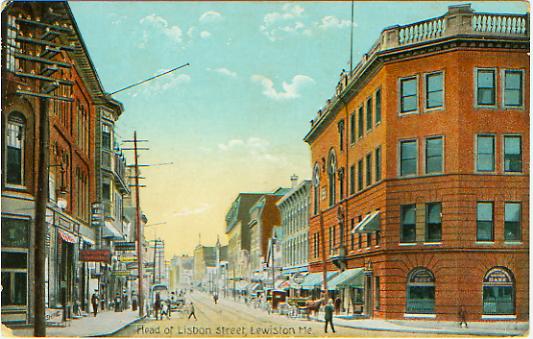
Head of Lisbon Street, Lewiston, Me. (c.1906)
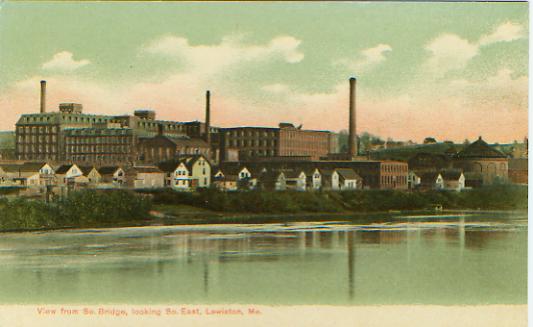
View from So. Bridge, looking So. East, Lewiston, Me. (c.1905)
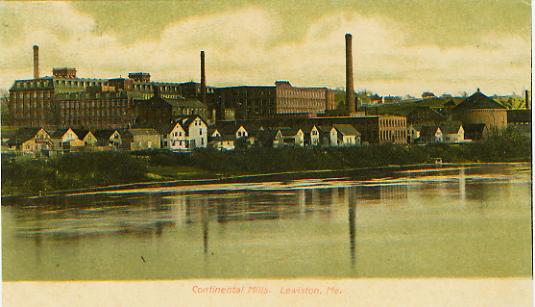
Continental Mills. Lewiston, Me. (c.1905)
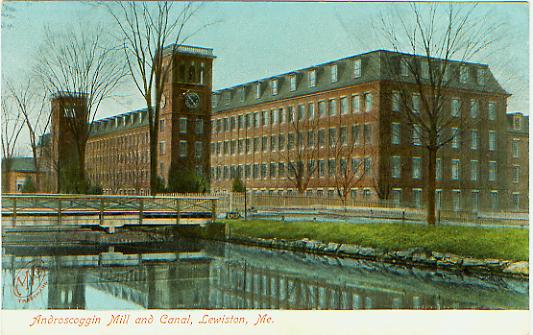
Androscoggin Mill and Canal, Lewiston, Me. (c.1905)
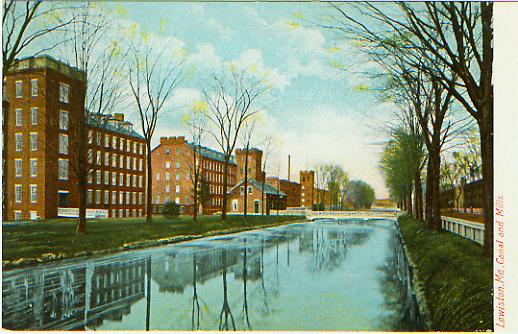
Lewiston, Me., Canal and Mills. (c.1905)
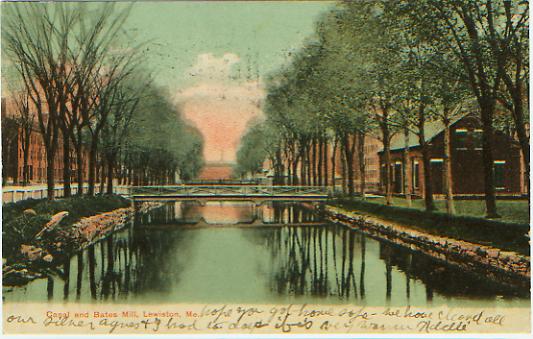
Canal and Bates Mill, Lewiston, Me. (c.1907)
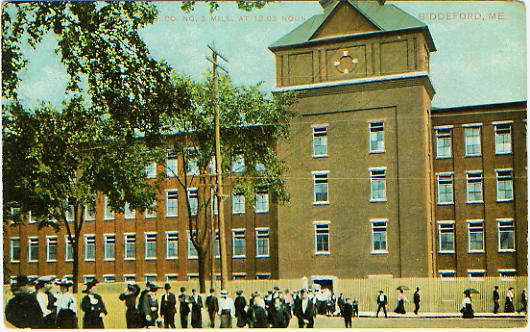
Pepperell Mfg. Co. No. 3 Mill, at 12:03 noon. Biddeford, Me. (c.1910)
